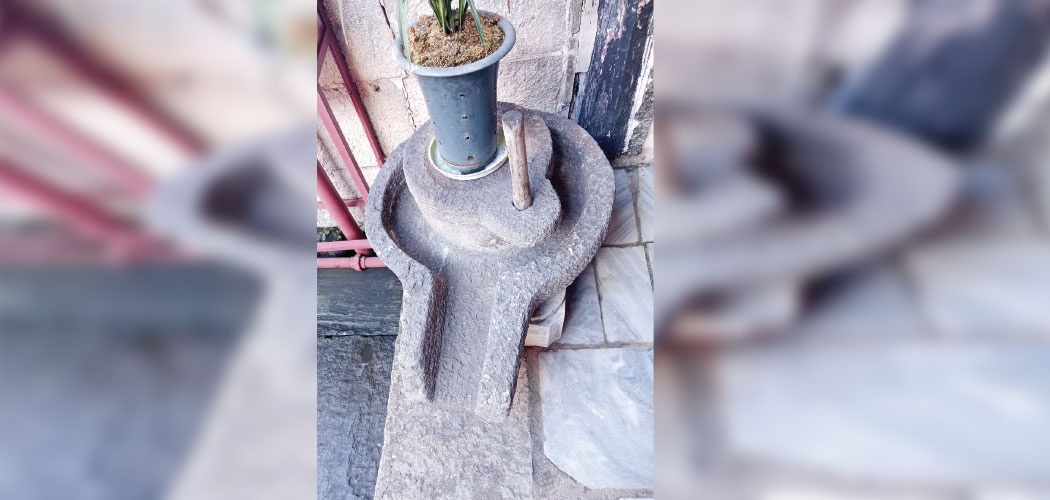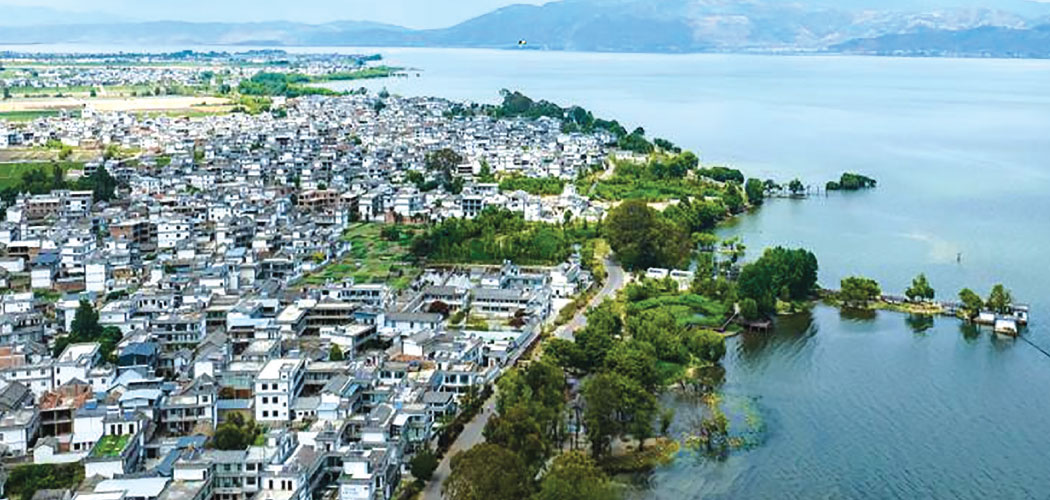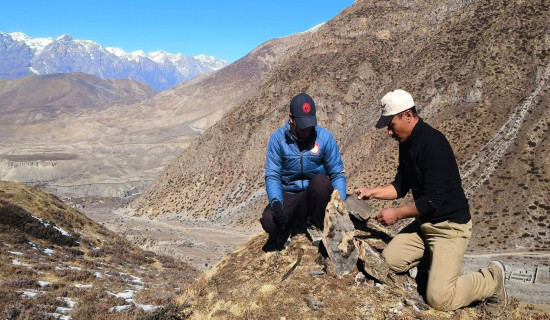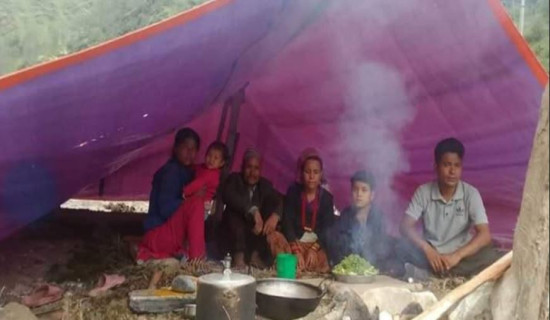- Monday, 1 December 2025
Dali Blends Nature, Culture, Growth
An old man was busy putting electric bulbs in plastic bottles on the grassy, wet bank of the Erhai Lake in Dali, Yunnan, China. A girl and a few kids, probably the old man's children, were giving him the bottles tied in ropes from the road above. The man used to put bulbs in the bottles, put the lids on, and put them in a boat that was near him. I wondered what they were doing in the dusk. When it grew dark, I saw the same bottles glowing with electric bulbs inside them and floating in the lake, giving a beautiful look to the massive water body. Crowds of onlookers captured the photographs.
This was the scene of a corner of the lake, one of the seven largest lakes in China, and the second largest in Yunnan Province, which we, 25 participants of the Seminar of Omnimedia Editors and Journalists, saw on our second-day visit to Dali Prefecture on September 20. The three-week seminar was organised in Beijing from September 9, and the participants were taken to Dali for a six-day field visit. It took us about four hours to fly to Dali Fengyi Airport from Beijing. Dali's is a new domestic airport with a single terminal.
The blue water lake
The Erhai Lake spans an area of 253 square kilometres. It is 40 kilometres long and nine kilometres wide on average. The Chinese government has preserved and promoted the lake with booming Dali city around it. Various activities are underway to preserve it and are linked with the livelihood of the people through agriculture and tourism. It is kept clean with various measures in place to prevent pollution. No stone is left unturned to give it an attractive look. It is evident from the work of the old man. The lake looks free from weeds and waste.
A flower pot, not Shiva Linga is seen standing on a stone in a courtyard of Dali, China.
The lake with blue water and a variety of aquatic animals draws both local and foreign tourists. They enjoy the beauty of the lake with different activities like photo shooting, cultural shows, and food in the restaurants standing near it. A well-paved road goes around the lake, with the hustle and bustle of visitors and tour guides. At one point, models and newly married couples were seen posing for photographs. Tourists were also seen taking photographs in different poses there.
According to local guides, the lake was once choked by pollution and foul smells, forcing many lifelong villagers to leave the shores where they were born. But over the years, the Erhai Lake has undergone a dramatic transformation, emerging as a symbol of ecological revival and rural prosperity. Known as the "mother lake" by locals of Dali Bai Autonomous Prefecture, the ear-shaped lake suffered severe degradation from the 1980s due to unchecked development.
According to the employees designated for the preservation of the lake, excessive fertiliser use and the direct discharge of untreated domestic sewage were the main culprits. President Xi Jinping's visit to the lake during an inspection tour to the province in January 2015 is said to be a turning point for the preservation and promotion of this lake. During his tour, President Xi called on residents and the local government to protect this piece of natural beauty, underscoring that it is a "long-term task (and) work is far from over", briefed an official.
Twenty wastewater treatment plants and over 5,700 kilometers of sewage pipelines have been built, creating a basin-wide network for household wastewater collection and treatment. Subsequently, many institutes contributed to the promotion of the massive lake, using it for the benefit of local farmers. In 2019, China Agricultural University launched a programme, known as "science and technology backyards", aiming to study and solve practical problems in the development of agriculture and rural areas, train high-level agricultural talents, and serve rural and agricultural modernization. This now runs a master's programme in agriculture led by Kemo Jin. She said the backyard has, of late, emerged as a popular academic institution, with increasing enrolment of locals.
Booming Dali City of Yunnan, China
We also visited Cibi Lake in Eryuan County. Located just on the lap of mountains, the 8.46 square kilometres Cibi Lake was clean and quiet, with no visitors. The lake is the water source for the Erhai Lake.
Besides the Erhai Lake, Dali has preserved and promoted its cultural heritage. The ancient town of Dali is rich in pagodas. Some of the temples and their open yards resemble Kathmandu's. The Bair and Shou courtyards resemble the ancient squares of Kathmandu. Their architectures also look similar to ours.
Temples sans Gods
Moreover, in the Bair Square, some small images of Gods and Goddesses were put on display. They include Buddha and the Goddess of Happiness (looks like Laxmi) and others. In a corner of the square was kept a flat stone on which the Shiva Linga stands in our temples. But there was no Shiva Linga, only the stone with a flower pot on it. It seems Hinduism had once flourished in Dali, as it is close to South Asia, especially Myanmar. However, no document was seen to support this, nor do the guides tell anything about it.
In Chongsheng, three tall pagoda temples stand. According to Li Jinna, who accompanied us during our Dali tour, the three pagodas, with the largest one standing in the centre, were built between 824 and 859. It is said that the largest, the Qianxun Pagoda, was built first, and the two smaller pagodas were added later.
Before we flew to Dali, we were also taken to the Temple of Heaven in Beijing. Built between 1406 and 1420, the Temple of Heaven draws a huge crowd of locals and international tourists every day. Unlike in Nepal, the temples in China have only structures and architectures to watch from outside; they have no images of Gods and Goddesses inside them. They are empty. They are only to watch and take photographs. We watched the three pagodas of Dali from a distance.
Dali offers many things to visitors to enjoy. The authorities are now planning to develop the Dali Fengyi Airport into an international airport. Once the airport opens for international flights, Dali is sure to emerge as a popular tourist destination in China.
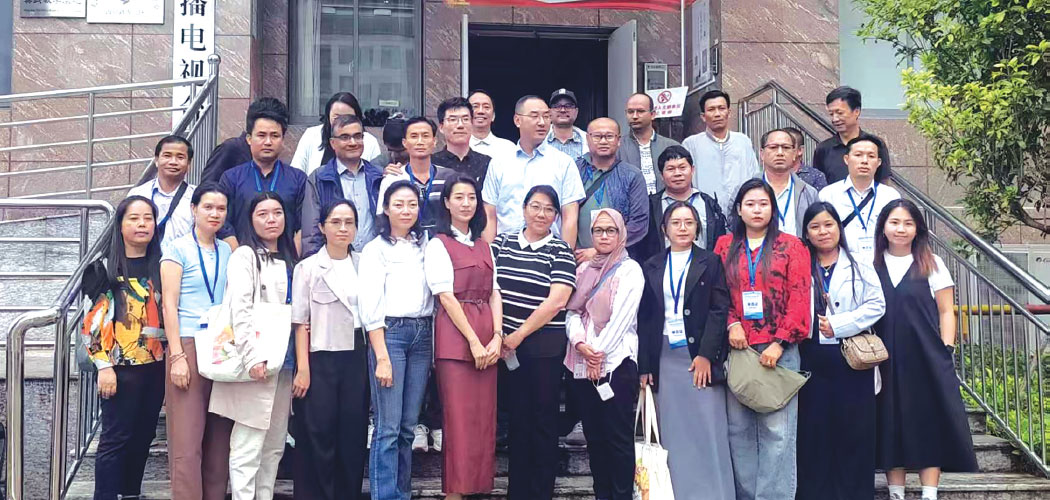
Participants of seminar of Omnimedia Editors and Journalists pose for a photograph in Dali, China
However, this scribe was impressed more by the innovation applied in the agriculture sector and the attraction of youth in agriculture in Dali.
In a county, an hour drive from Dali City, lies an attractive fruit farm in a land that was previously a barren hill used only as a graveyard. A large orange garden spreads across the entire area on the top of a hill, while pomegranate and grape gardens lie in between. The highland has been vigorously developed as a green garden of fruit trees.
A few years ago, Nepal and China had inked an MoU, according to which Nepal was to supply citrus fruit to China. But what I realised while standing on a hill with small orange plants standing around it, the single area has more orange trees than Nepal's total orange trees. The orange trees bearing fruit were small so that one could pluck all the fruit from the ground. Also, garden owners said that their oranges ripen later than other oranges, so that they could get better prices for their produce. In 2024, the garden exported fruit worth $16 million to ASEAN countries.
The area has introduced 48 leading agricultural enterprises, built 17 large-scale farms and developed 14,000 family farms and cooperatives, directly benefitting 52,000 farmers and increasing the per capita income of farmers by 2,000 Yuan annually, read a notice displayed in a hillock located in the middle of the orange garden.
Zeng Yating, a young farmer who said she owns Binchuan Yunfu Farm Produce Company Limited, looked excited to show her orange farm spread on the hill to the visitors. She said she has engaged in orange farming after returning from Australia. "Look, that is my farm, that is also mine," she said in standard English while interacting with our team. In China, most officials and others do not speak English. They convey their messages to the visitors through interpreters. Kemo and Zeng, the two ladies, were exceptions. They interacted in English. Kemo even shared that she encountered English-speaking visitors after a long time.
Zeng said that the county has established four pillar industries—green vegetables, plateau fruits, potatoes and highland barley. According to her, they replace the old orange trees and plant new ones every eight years. As the farm is divided into several plots, they replace the old plants of one or two plots every year.
While watching the green garden of oranges spread in a difficult topography and listening to Zeng, I was thinking why the agriculture ministers from Nepal do not visit the fruit farm and apply similar technology here. About 70 years ago, BP Koirala had dreamt of growing citrus fruit in the mountains. But that has not been realised yet. Believe it or not, every pomegranate fruit of the huge garden was kept in a white plastic bag to avoid insects! The blend of nature, culture and growth in Dali is highly impressive.
Insights into China's development
The three-week seminar helped provide insight about China's development, its policies towards its neighbours and friendly countries, governance system, Communist Party of China (CPC), and the way it functions, the media and many. The field visits, mostly associated with the issues discussed in the seminar and workshop, provided the first-hand knowledge to 25 participants from six countries — Laos, Myanmar, Nepal, the Philippines, Indonesia and Malaysia.
In Beijing, the participants visited the CPC Museum, China Science and Technology Museum, the Great Wall and the AI Experience Centre. The museum offers an insight into the history of China, the communist movement and its leaders, while the AI Centre shows how China has made a giant leap in the field of AI and how China has applied it in practice, like in teaching-learning activities in schools and in medical sciences.
This scribe, who had earlier visited Beijing in 2005, was astonished by the transformation of the city in 20 years. Then, I saw from the hotel room many workers busy building skyscrapers day and night. But this time, only a few structures were under construction because the infrastructure construction phase has now reached saturation in the Chinese capital.
(The author is Acting Editor-In-Chief of this daily.)


